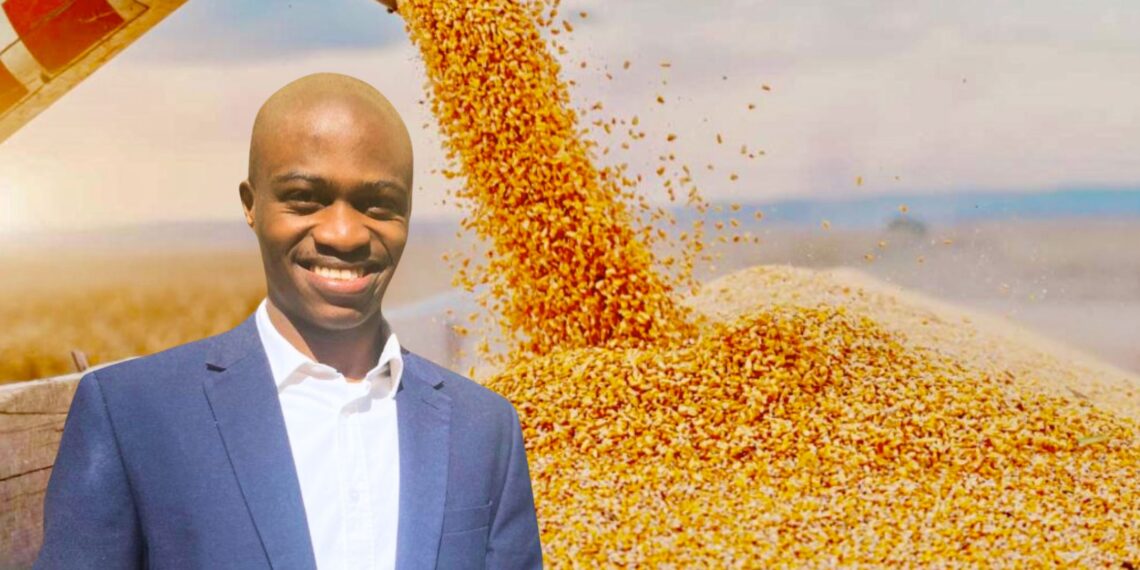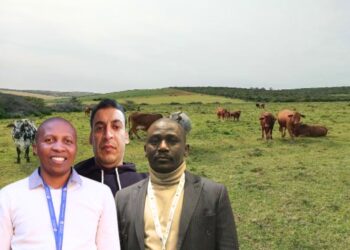Despite a record harvest, global maize trade is expected to contract by 2%. This will require South Africa to navigate stiff competition and shifting import demand in international markets, writes Buhlebemvelo Dube, economist for trade research at the National Agricultural Marketing Council (NAMC).
The seventh Crop Estimates Committee (CEC) report for August 2025 confirms one of South Africa’s largest harvests in recent years. Commercial maize output is now estimated at 15.802 million tonnes, an upward revision of 5.1% from July and almost 23% higher than the previous season. When non-commercial maize production of 0.622 million tonnes is included, the national total rises to 16.424 million tonnes.
This surge reflects favourable yields, averaging 6.09 tonnes per hectare, with Free State, Mpumalanga, and North West together contributing more than 80 per cent of production. White maize is forecast at 8.081 million tonnes, primarily for human consumption, while yellow maize is set at 7.721 million tonnes, largely for feed use and export, with yields nearly 50 per cent higher than white maize.
Soya bean production, revised to 2.753 million tonnes, strengthens domestic protein meal availability and reduces dependence on imports, while sunflower output of 0.708 million tonnes ensures stability in the vegetable oils market. Other summer crops, such as dry beans, sorghum, and groundnuts, contribute modestly to overall tonnage but remain important for niche markets.
The trade implications of this harvest are considerable. In a year when the Agricultural Market Information System (AMIS) projects record global maize output of more than 1.26 billion tonnes, international maize trade is expected to contract by 2% due to reduced import demand from the EU, Mexico, and Türkiye.
South Africa enters this market with a notable surplus, but it must navigate strong competition from Brazil and Argentina, whose export momentum is exerting downward pressure on global prices.
At the same time, geopolitical frictions that include the European Union’s continued restrictions on Ukrainian grain and India’s ongoing wheat export ban both constrain supply chains and sustain volatility in futures markets. Soya bean figures suggest that global trade is forecast to expand by 2 per cent, underpinned by South American supply and biofuel demand, creating opportunities for South Africa to leverage its oilseed sector.
Related stories
- Grain and oilseed markets: Tariffs shake up global trade
- Pearl barley: Explore the unsung hero of grains
White maize for neighbours, yellow maize for global markets
Regional dynamics sharpen the trade lens. The FAO’s Global Report on Food Crises highlights that nearly 300 million people faced acute food insecurity in 2024, with Southern Africa disproportionately affected by El Niño-related production shocks.
Against this backdrop, South Africa’s white maize surplus offers a strategic opportunity to prioritise shipments to deficit countries such as Zimbabwe, Malawi, and Mozambique during their hunger-season peaks. This “region-first” export sequencing could both enhance regional stability and reinforce South Africa’s position as a reliable food supplier within SADC.
By contrast, yellow maize, with higher yields and stronger competitiveness in feed markets, can be directed to international channels where export parity aligns with global price signals.
The macroeconomic and trade effects of this harvest resonate strongly with established economic theory. In a Heckscher-Ohlin framework, South Africa’s relative abundance of arable land and climate resilience underpin its comparative advantage in cereal production. A record maize crop, therefore, pushes the economy outward along its production frontier, increasing its exportable surplus.
Yet by the Stolper-Samuelson theorem, trade openness can create distributive tensions: exporters and capital-intensive agribusinesses capture gains from higher trade volumes, while domestic consumers may experience upward price pressures if export parity pricing dominates.
From a New Keynesian open-economy perspective (Galí, 2008), the supply shock strengthens the exchange rate and moderates inflation, but these stabilising forces hold only if policy frameworks, both trade and monetary, contain volatility in forward markets.
In practice, the challenge is to design export sequencing and risk management rules that maximise foreign exchange gains without undermining welfare at home or food access in the region.
Futures markets signal shifting demand
Risks remain that could undermine the translation of these gains into long-term competitiveness. AMIS fertiliser indices indicate that nitrogen and phosphate prices are still elevated compared to pre-pandemic baselines, raising the cost of planting for 2025/26.
Without proactive procurement strategies such as index-linked contracts and staggered purchasing, margins may erode, jeopardising the sustainability of production.
Similarly, the flattening backwardation in maize futures and the contango in soya bean futures suggest subtle shifts in global demand expectations, underscoring the need for South African exporters to adopt forward-looking hedging practices.
The policy priority is therefore to transform the CEC’s favourable production outlook into a coherent trade and food security strategy. White maize exports should be sequenced in line with SADC humanitarian imperatives, while yellow maize should be allocated flexibly between domestic feed markets and global buyers depending on parity conditions.
Soya beans must increasingly be directed to domestic crushing to reduce reliance on protein meal imports, thereby stabilising the feed-to-food balance. At the same time, fertiliser risk management is critical to safeguard production continuity into the next cycle.
South Africa’s 16.4 million-tonne maize harvest is not just an agricultural statistic but a macro-trade signal. In an environment of volatile global markets and fragile regional food security, a credible balance between export promotion and domestic affordability will be decisive.
If well managed, the surplus can position South African agriculture as both a growth engine in international trade and a stabilising force for regional food systems. Once again, the CEC figures emphasise the resilience and optimistic nature of the South African agricultural sector amidst numerous setbacks.
- Buhlebemvelo Dube is an economist for trade research at the National Agricultural Marketing Council (NAMC). The views and opinions expressed in this article are those of the author and do not necessarily reflect the views or positions of Food For Mzansi.
READ NEXT: Brics+ offers new horizons for SA’s agri-trade


















